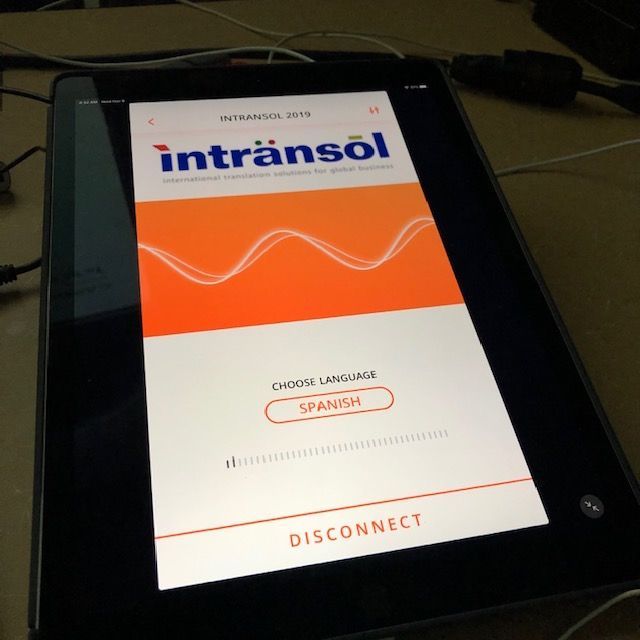Does your website parle-t-il français, habla español or parla italiano?
Way back in the early 90s, having a website was a pretty big deal. There was no such thing as WordPress with thousands of themes to choose from. Sites has had to be built from scratch by people who knew code. A decent site could have ended up costing tens of thousands of dollars and very few of them, if any, were in multiple languages. English-only websites dominated the Internet.
Fast forward a few years and things have certainly changed. Major players in retail and manufacturing have realized that English-only sites will only appeal to English-only speakers. That would exclude about 70% of the world’s population. Such organizations that have sites in multiple languages have truly put the worldwide in the web. If you think Internet consumers speak your language well enough to want to buy from your English-only site, this could be a fatal misunderstanding. In fact, there is an undeniably strong link between in-language content and a consumer’s likelihood of making a purchase.
In 2012, an independent research group, Common Sense Advisory, conducted a survey of 2,430 web consumers in eight countries. In the survey, they found that 72.1% of those consumers surveyed spend most or all of their time on websites in their own language; 72.4% said they would be more likely to buy a product with information in their own language, and 56.2% said that the ability to obtain information in their own language is more important than price. This means that more than half of consumers are willing to pay more if you are willing to give them information in their own languages.
A Gallup survey of language preferences
among Internet users in 23 E.U. countries conducted by the European Commission in 2011 revealed some remarkably similar findings: 9 out of 10 Internet users said that, when given a choice of languages, they always
visited a website in their own native language; nearly one in five Europeans (19%) said they never
browse in a language other than their own, and 42% said they never
purchase products or services in other languages. Seems that the writing is on the wall: it pays to have content on your website in languages other than just English.
The potential for international opportunities is obviously extremely appealing. This is why so many companies are proactively performing website localization into multiple languages. The ROI can be enormous. 
The world is your oyster
If you work for a global company with a strong web presence or much of your business is derived from online exposure and sales, a site that is multilingual will engage your customers in their languages, enhance the user experience and generate more business. There’s no country in the world where only one language is spoken, including the United States. Although English may seem to be enough, you could be missing out on a huge market share by not having a site in different languages. Localizing your website involves the same pre-translation steps as traditional print projects. If your company has given you the task of investigating this before you plunge head-first into the website localization process, here are some things to consider:
What languages to translate into? Each company should study the location and habits of its own web visitors and evaluate its strategic geographical plans for growth. Once you know what geographies to target, you can easily determine the languages that you need. This could be French for Canada, for example, or Spanish for the United States.
Map it out. Plan ahead by thinking about the navigation of your site. How will your foreign users be directed to the correct pages? Your home page may need to greet visitors in several languages at once. It’s usually best to give them a language option using the native name of the language. For example, the multilingual menu options for your site should simply be “English”, “Française”, “Italiano”, “Deutsch”, “Español”, “Svenska”, “русский”, “中文”, “日本語”, “한국어”, and so forth.
Choose a multilingual-ready theme. If you’re using a multilingual-ready WordPress theme for your site, you’re already way ahead of the game. You’ll just need to check to make sure that the theme you’re using is multilingual-ready. If not, it may be time to think about upgrading. A great resource where you can find themes that are ready to add languages is themeforest.net. You can either purchase a multilingual-ready theme or purchase a plug-in called WPML (WordPress Multilingual) which will allow you to add languages to your site. WordPress is an open-source software for building websites. Today more than 25% of all sites out there a WordPress sites. The advantages are that there are hundreds of themes to choose from, including e-commerce sites with shopping carts. You can run WordPress sites from your own servers or use WordPress hosting.
How much to budget? Having determined the needed languages, try to identify the budget within which you need to operate. If the budget drives the requirements, there are different cost reduction techniques that you can follow to maximize the value of your efforts.
- Eliminate obsolete and rarely used pages, such as unused files left on the web server, old press releases, old articles, etc.
- Identify which 20% of your website is viewed 80% by your users. You’ll then be better able to gauge your priorities and establish a budget.
- Identify local-sensitive pages (such as job postings, local events, and local programs) and exclude them from the localization process.
- Identify the pages that are best to have re-created to meet the specific needs and expectations of consumers in local markets. These could be pages related to local events, habits and customs. Coordinate with your in-country staff and engage the proper resources to re-create the pages rather than localize.
- Minimize the use of graphics and image-based navigation buttons with embedded text. Convert as many of these as you can to text. This will minimize the costs of graphic editing, which can be time-consuming.
- Reduce the need to localize PDFs (data sheets, brochures, white papers, etc.). Identify which ones are most important and which ones you can eliminate entirely or simply leave in the original language.
It is not always possible to estimate the cost of localizing a website by simply viewing it online. Websites are dynamic and not just static. An effort to collect and compile all of the the assets and source files of the site that will require localization is essential before an accurate estimate can be generated. Doing this can be a time-consuming process and is usually outside of the scope or providing a free estimate. It is usually best to compile all of the text in Word docs since translation teams work most efficiently in this file format. Once you have compiled the text and created a Word doc for each page or one Word doc with all pages identified, go through the files carefully to determine what the best strategy for each will be. Ask yourself these questions:
- Should pages be kept or eliminated?
- Should you leave any pages in English?
- To which language(s) should pages be localized?
- Should any pages be re-authored (re-created) so that they are more authentic in the target language(s)?
Once you have Word docs or other text files of the pages requiring localization collected and ready to review, contact your translation vendor for an estimate to translate those files. The cost of localization should include the following:
- Translating the content
- QA reviews by proofreaders/editors
- Localizing basic images
- Storing the translation in translation databases for future reuse
You may also want your translation vendor to populate the pages within the backend editor of the site where it’s hosted and to perform tests on different browsers and on different devices to make sure the localized content is displaying properly. This is part of the localization process and it should be clarified with your vendor upfront whether this is something you will handle internally or if it is something you want your vendor to handle. If you wish for your translation vendor to handle this, it will involve additional costs and they will need to be able to access the backend editor of your site where it is hosted.
How often to synchronize languages?
Since websites are very organic in nature and are constantly changing, you should also decide how frequently you will want to update the localized pages, and how closely they should be synchronized with the source.
With the use of translation memory, this technology allows for tracking and translation of updates either frequently (weekly or monthly) or infrequently (quarterly or yearly). It all depends on how much time and money you are willing to spend on having updates to your site in English reflected in the localized languages.
Ready to get started?
Having multilingual content for your global customers in their languages with a professionally localized website is not a simple endeavor. It requires many steps that must be followed diligently to get the job done right. Scrimping on the effort by relying on automated online translation tools could have quite the opposite of the desired effect. People who view sites in languages that are obviously “machine translations” or done with online translation tools will see the gibberish, non-sense language immediately and may leave your site and never return. Done professionally and correctly, however, your localized site could turn visitors into long-term customers who tell their friends, who tell their friends. This is why you need to think seriously about involving a professional and reputable language service provider (LSP) early in the process. Please feel free to contact us with questions or for additional information about how we can assist you in creating a strong multilingual online presence.
By Jason Wood
CEO & Managing Director
The post Does your website parle-t-il français, habla español or parla italiano? appeared first on intransol.











